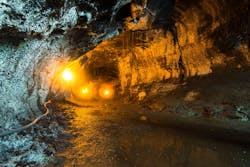Following the volcanic eruptions on Hawaii’s Big Island — where poles and equipment have been damaged or destroyed by lava — both Hawaii Electric Light (HELCO) and the state are moving toward boosting microgrid development.
The eruptions from the Kilauea Volcano began May 3 on the Big Island and continue, with lava mangling utility-owned electrical equipment.
“We know that we have hundreds of poles and associated equipment that has been damaged or destroyed by lava activity,” said Rhea Lee-Moku, manager, administration for HELCO. “We have also lost a switching station that was covered by lava. We are unable to complete a full assessment of damage until the eruption stops and the areas are safe for entry.”
HELCO now has plans to create a small microgrid, using a diesel generator, that would serve Vacationland Hawai‘i and Kapoho Beach Lots areas once the eruption and lava flow activities stop, she said.
In order to implement the plan, HELCO must secure land rights, gain access to prepare a site and move a generator to Kapoho, and be able to keep the generator fueled and maintained, said Lee-Moku.
No microgrids will be installed before the eruptions stop and the region is stable and safe, she noted.
“We’ve evaluated solar plus storage and this option is a potential longer-term solution for these communities,” she said.
Microgrid development for isolated communities
The utility wants to protect remote communities that might become isolated from the grid.
“There is only one power line serving some of these remote communities and if this radial feed is lost, we lose the ability to provide power to those communities,” she said.
One plant owned by Puna Geotherma Venture (PGV) that provides about 25 percent of HELCO’s power shut down on May 3, when the eruptions began, and hasn’t produced power since then, she said.
“Since PGV stopped generating power, we have relied on other generating units to provide the island’s electricity. Hawaii Island has a diverse portfolio of generation including fossil fueled generation, solar, wind, and hydropower,” she said.
HELCO is considering a number of contingency plans for ensuring its system is reliable. They include “line extensions to connect undamaged facilities or spanning the lava flow using taller poles and longer spans,” she said.
But first HELCO must conduct a full assessment to determine what’s best for the communities, she said.
Legislation calls for microgrid tariff
Meanwhile, the state legislature approved and sent to Gov. David Ige a proposal to create a standard microgrid services tariff, which aims to make it easier and more cost-effective for developers and homeowners to install microgrids. The bill also aims to prevent microgrid owners from defecting from the grid.
“The legislature believes that the use of microgrids would build energy resiliency into our communities, thereby increasing public safety and security,” says the bill, HB 2110,
The bill seeks to establish a tariff, which would need approval from the public utilities commission, that would provide fair compensation for electricity and grid services. It also aims to standardize and streamline the interconnection process for microgrid projects.
Microgrids can help Hawaii attain its clean-energy goals by enabling integration of more renewable energy and distributed energy resources, the bill says. They can also provide important services to the grid, including energy storage and demand response to “support load shifting, frequency response, and voltage control, among other ancillary services,” says the bill.
“The legislature believes that the use of microgrids would build energy resiliency into our communities…”
However, microgrid development has been hindered by a number of factors, including “interconnection barriers and a lack of standard terms regarding the value of services exchanged between the microgrid operator and the utility,” says the bill.
Without standard terms for interconnecting and valuing microgrid services, businesses and homeowners who develop microgrids may decide to abandon the utility grid, says the bill. This would weaken the overall system and boost costs for other customers, the bill says.
The legislation notes that Puerto Rico is now rebuilding its energy system to incorporate microgrids after last year’s Hurricane Maria devastated the electric grid. Ninety percent of that island’s residents remained without power one month after the storm hit.
Track news about microgrid development in Hawaii. Subscribe to the free Microgrid Knowledge newsletter.








